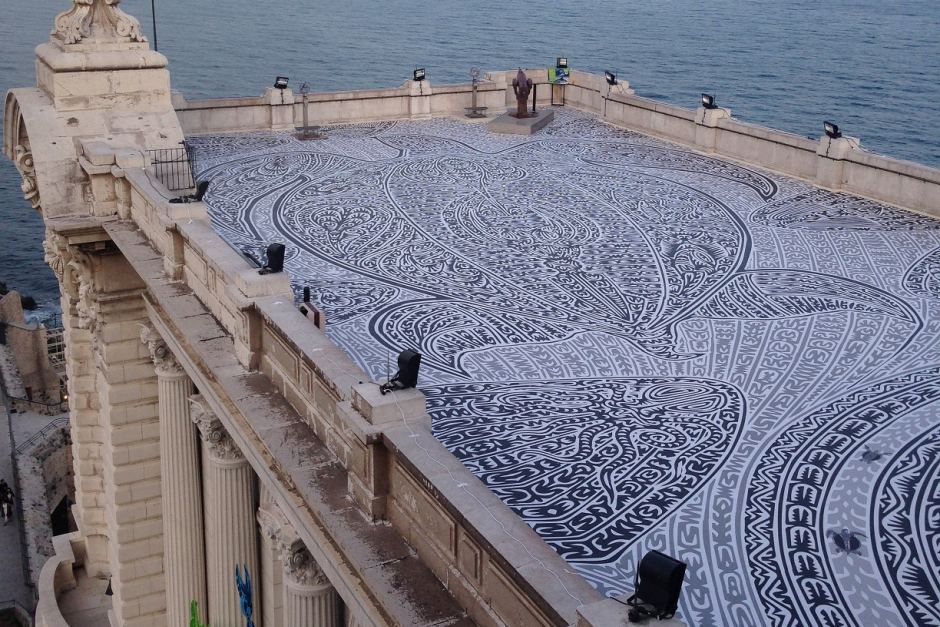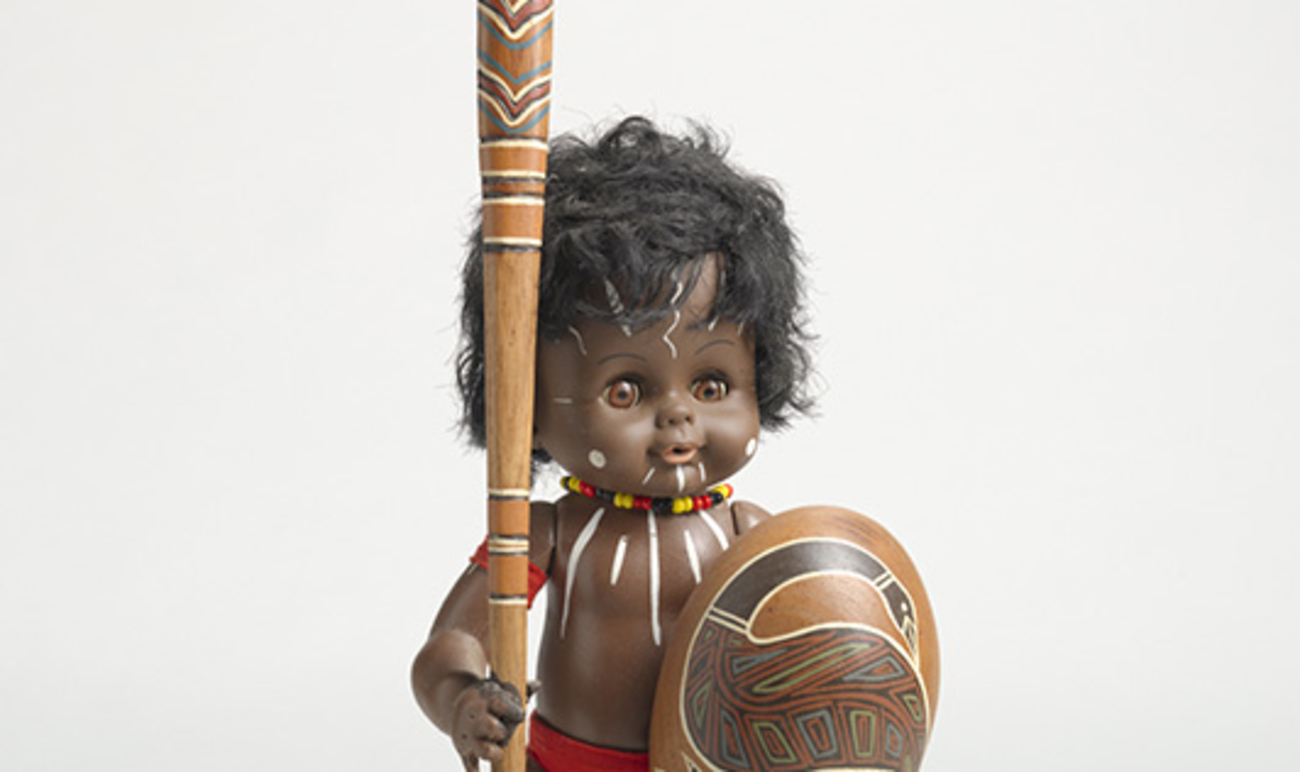Aboriginal artworks are some of the oldest in the world. Rock paintings from the Kimberley’s Carpenter’s Gap have been dated at 40,000 years old, and the concentric circle art of central Australia is thought to be the oldest continuing art tradition in the world.
While there is a long history of Aboriginal and Torres Strait Islander art in this country, First Nations artists are today producing works in a range of styles and mediums. Some First Nations artists work in what might be called a ‘traditional’ style that is specific to their nation or culture, while others have embraced contemporary art methods or approaches.
There is no one First Nations Australian art style because there are hundreds of different cultures and every individual has their own method.

'We are enough', Charlotte Allingham. Charlotte is a Wiradjuri, Ngiyampaa artist from New South Wales with family ties to Condobolin and Ivanhoe communities. Charlotte is known for her detailed and bold illustrations that explore her cultural identity and the impacts of colonisation in Australia for Indigenous people. With highly detailed and bold illustrations, Charlotte challenges the perception of Indigenous people in a range of themes of modern subcultures, occultism and First Nation's futurism. Covering topics from community connection, body positivity to black strength and power, Charlotte’s works respond to current political and social issues and are often used to represent Indigenous and LGBTQI+ movements, events, and design.
'We are enough', Charlotte Allingham. Charlotte is a Wiradjuri, Ngiyampaa artist from New South Wales with family ties to Condobolin and Ivanhoe communities. Charlotte is known for her detailed and bold illustrations that explore her cultural identity and the impacts of colonisation in Australia for Indigenous people. With highly detailed and bold illustrations, Charlotte challenges the perception of Indigenous people in a range of themes of modern subcultures, occultism and First Nation's futurism. Covering topics from community connection, body positivity to black strength and power, Charlotte’s works respond to current political and social issues and are often used to represent Indigenous and LGBTQI+ movements, events, and design.
There is now a significant international market for First Nations Australian art with galleries and museums around the world showcasing the unique styles of First Nations artists.
Given the popularity of some of the art internationally, the industry is worth a significant amount of money to artists, communities and the Australian economy.

Alick Tipoti is an artist from Badu Island in the Torres Strait. His rooftop installation ‘Turtle mating and nesting season’ covered the roof of the Oceanographic Museum of Monaco as part of the Taba Naba – Australia, Oceania, Arts of the Sea People exhibition in 2016. Photograph by Michel Dagnino.
Alick Tipoti is an artist from Badu Island in the Torres Strait. His rooftop installation ‘Turtle mating and nesting season’ covered the roof of the Oceanographic Museum of Monaco as part of the Taba Naba – Australia, Oceania, Arts of the Sea People exhibition in 2016. Photograph by Michel Dagnino.
What do we mean by ‘art’?
Often when you say ‘Aboriginal artwork’ to people, they immediately think of ochre colours and dots. However, many artists use acrylics and other mediums, and dot paintings are only done by artists from specific areas and not used at all in other places.
First Nations artworks are used on a range of objects, clothing and much more. They may appear on the fabric of a handbag or scarf, a clapstick or a fridge magnet. It includes anything and everything that showcases First Nations Australian art and designs.
The popularity of Australian First Nations art has also given rise to unethical trade and appropriation by unscrupulous people who have taken advantage of artists and the system.
How does it happen? And who does it hurt?
Appropriation of art can happen in various ways. Sometimes work is used commercially on products without appropriate permission, meaning none of the money makes its way back to the artist. Other times, people have preyed upon artists in a con known as carpet-bagging.
This is when work has been bought from the artists at very low prices, and then is sold in galleries for a great deal more. Meaning that the artist is never properly compensated for their work. Often people who do this will prey on elderly artists who may not know their rights or the value of their work.
Entire industries have sprung up in other countries where artists there are paid negligible amounts to ‘emulate’ popular Indigenous Australian art styles, like dot paintings. This is so prevalent that it is highly likely you’ve already seen them in a gift shop somewhere. It has become such a big problem that it has been labelled by the Indigenous Art Code as a ‘crisis’.
For many artists, the money from their work is their main source of income. By selling unethically sourced or fake art, businesses are depriving artists and their families. Customers often don’t know that what they’re buying is either unethically sourced or fake. It also deprives businesses who do source their art and materials ethically.
The problem sounds so big, what can you do?
There are things that individuals can do when buying Aboriginal and Torres Strait Islander artwork to make sure that they are getting authentic art, and are supporting the First Nations artists and their communities. With a simple purchase you can contribute to an ethical system that benefits the artists and everyone involved. A few things you can do are:
- Make sure your purchase has been designed/created by a First Nations person. Authentic products will often have materials with them that name the artist, their community and/or nation/s, and sometimes this will include a brief biography or maybe even a photo of the artist. If this information is not included with the item, you are within your rights to ask for that information; an ethical buyer will know these details.
- Buy your art direct from artists or from community galleries or companies that supply the work directly. Many of these galleries will supply you with a certificate of authenticity.
- Before purchasing an item, speak to the buyer or company about how artists are paid, and what the break down is. You are allowed to know this. Many ethical companies already have this information on their websites.
- Remember that all forms of First Nations art sit under the umbrella of artwork, including textiles, knick-knacks and so on. Before purchasing that magnet with the cool design ask yourself, where does that artwork come from?
- These are the basics, but there is a lot more that can be done. For further information, head over to the Indigenous Art Code website and learn more about what you can do to support First Nations artists, and the ethical art industry in Australia.



